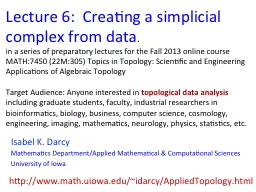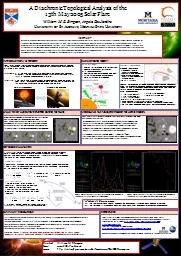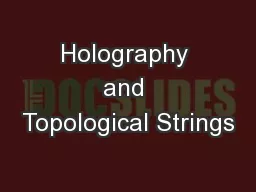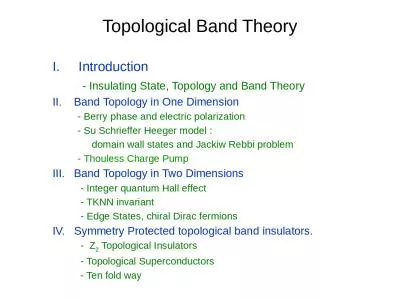PPT-Topological Data Analysis
Author : ellena-manuel | Published Date : 2017-12-16
Applications II This work was partially supported by the Joint DMSNIGMS Initiative to Support Research in the Area of Mathematical Biology NSF 0800285 Isabel K
Presentation Embed Code
Download Presentation
Download Presentation The PPT/PDF document "Topological Data Analysis" is the property of its rightful owner. Permission is granted to download and print the materials on this website for personal, non-commercial use only, and to display it on your personal computer provided you do not modify the materials and that you retain all copyright notices contained in the materials. By downloading content from our website, you accept the terms of this agreement.
Topological Data Analysis: Transcript
Download Rules Of Document
"Topological Data Analysis"The content belongs to its owner. You may download and print it for personal use, without modification, and keep all copyright notices. By downloading, you agree to these terms.
Related Documents













